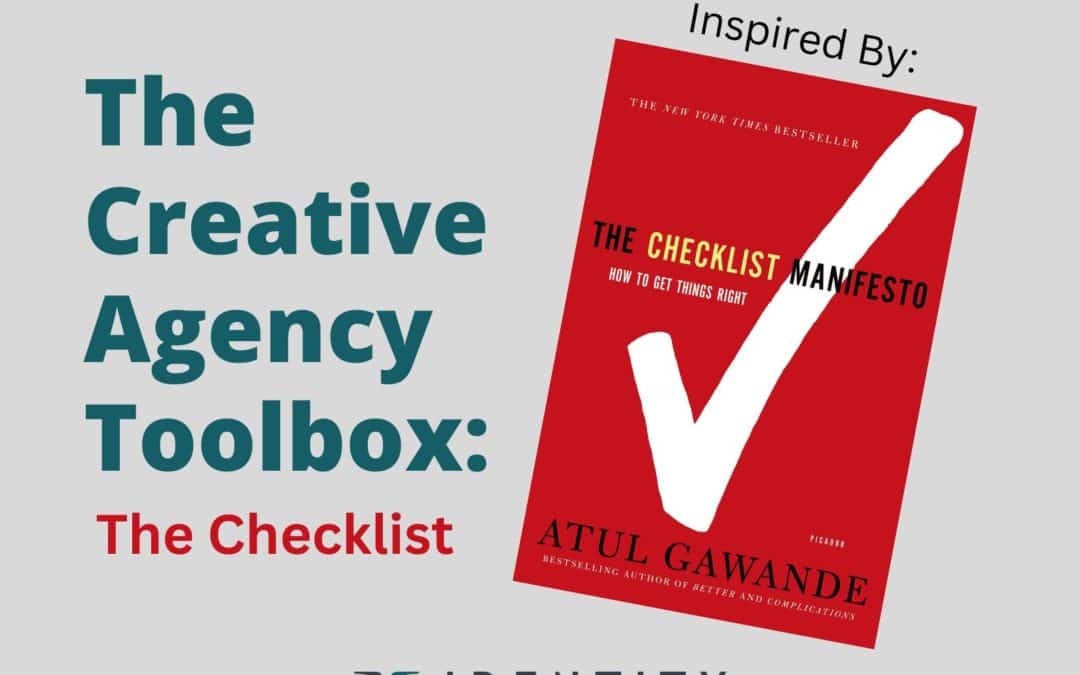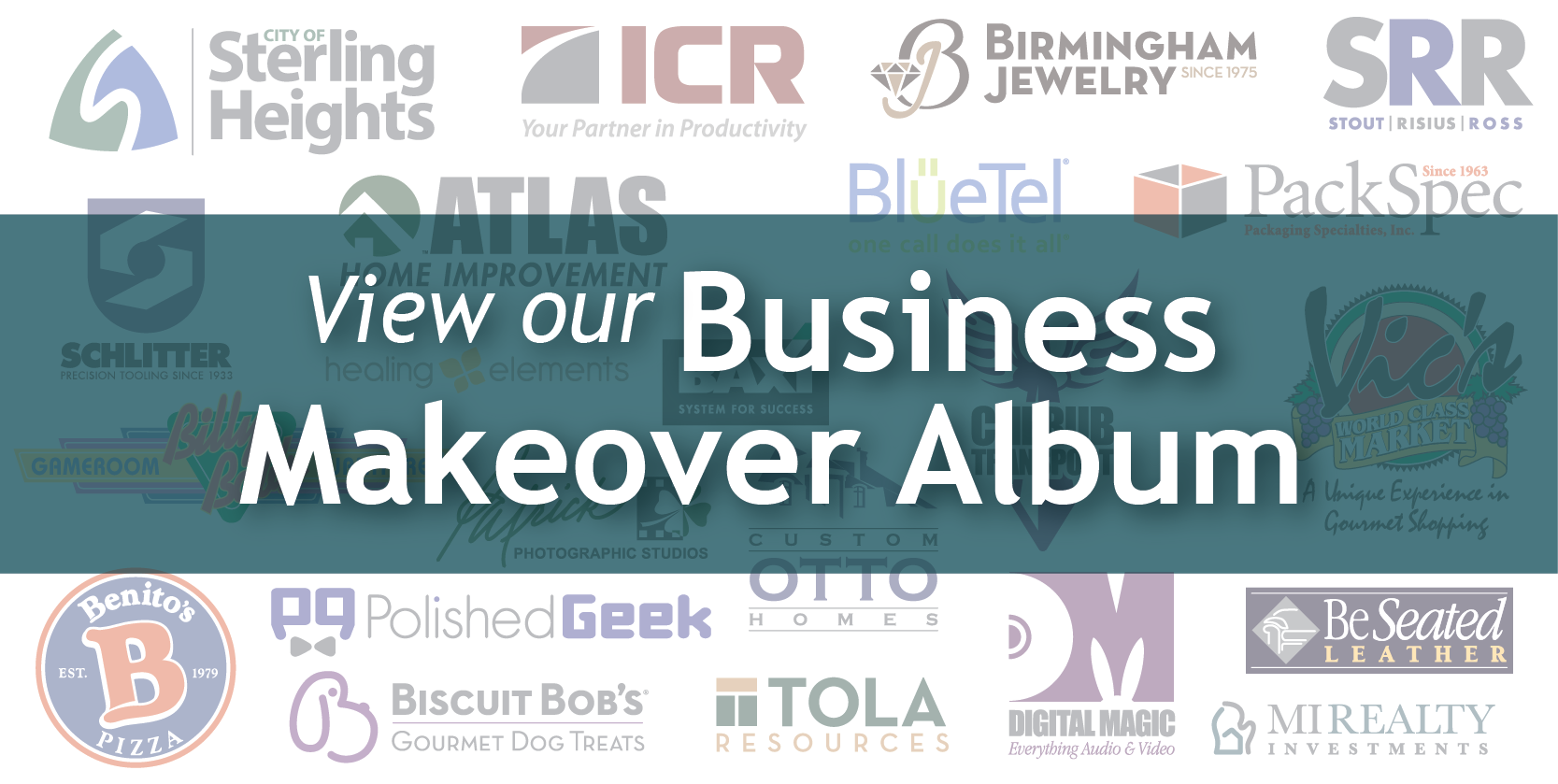Where would we be without checklists? Here are a few checklists from our Agency ToolBox!
The idea of a step-by-step checklist can seem insignificant in many ways. Phrases like “I have done this a hundred times” is when danger is around the corner. The power of a checklist is grossly underestimated: it significantly impacts ensuring consistent success even in small, day-to-day tasks.
The book The Checklist Manifesto, by Atul Gawande, describes how the elementary idea of a checklist will simplify the complexity of life and projects and lead us to consistent success.
If pilots discarded the pre-flight checklist as an unnecessary step, we would likely see more accidents on the runway – or even worse, in the air upon ascent. If a baker skipped the recipe and guessed measurements, there would be more baked goods in the garbage than for sale in the shop.
At Identity Creative, we think of a checklist like a triple-check or accountability partner. We are humans and make mistakes; having the discipline to use a checklist removes 98% of the possibility of error. Atul Gawande explains:

We are all plagued by failures – by missed subtleties, overlooked knowledge, and outright errors. For the most part, we have imagined that little can be done beyond working harder and harder to catch the problems and clean up after them.
We are not in the habit of thinking the way the army pilots did as they looked upon their shiny new Model 299 bomber – a machine so complex no one was sure human beings could fly it.
They, too, could have decided just to “try harder” or to dismiss a crash as the failings of a “weak” pilot. Instead, they chose to accept their fallibilities. They recognized the simplicity and power of using a checklist.
Our team at Identity Creative has read this book and has spent significant time implementing the checklist routine into our everyday tasks. We may not be piloting a plane or performing open heart surgery, but in branding, the key to a long-lasting, strong brand is consistency and correct usage of elements and language. This is where the checklist comes in.
Here’s an example. We consistently use a checklist to make sure we deliver outstanding results for our clients with our email publishing. As email marketers, designing, creating, and publishing a monthly email for multiple different clients while ensuring all their edits and revisions are accounted for can become an extensive and potentially confusing process with a lot of miscellaneous steps. Therefore, we created our checklist to ensure nothing falls through the cracks.
The Online Publication Checklist:
- Run through spellcheck and Grammarly
- Send final client version for review and approvals
- Send Preview to “Marketing Test Group”
- Have two different editors review each email
- Check any downloads for accuracy, including media link
- Check all links
- Check Subject Line
- Check Preview Line
- Check dynamic content (personalization)
- Confirm UNCHECKED “Can send multiple times: IN SEND SETTINGS
- Rebuild Lists Before Sending
- Confirm Distribution Mailing Lists
- Confirm Delivery Date/Time
- Publish Email
- Send the Client email with the detailed send settings
Another internal checklist we use is our Daily Start. This is a recurring checklist in our project management software, designed to help employees start their day on the right track. By checking all the tasks, projects, and deadlines, we can plan our work for the day.
The Daily Start Checklist:
- Check ClickUp dashboard for tasks: update status, due dates, comments, events
- Clear any old or irrelevant tasks
- Check Email Inbox and add any tasks to ClickUp
- Organize today’s tasks in the line-up or task tray
This daily reminder and routine get us immediately opening our project management tool and prioritizing our day. It is another check to keep everything running smoothly and ensure we meet deadlines. Client projects are prioritized, and last-minute panics are avoided. This internal checklist is not seen by any client, yet it has a measurable positive impact on our client service.
The Prep for Print Checklist:
Checklists are a must-have when it comes to finalizing projects for print as well. For simplification purposes, we will be referencing Adobe Illustrators’ PDF export features. When using Adobe InDesign, many of the features are the same, but vary in some features.
The following three preliminary steps are recommended before finalizing the files to print:
- Ensure all colors used in the document are CMYK
- Ensure all photos and graphics used are CMYK
- Inspect to ensure all linked image files are high-resolution (minimum 300dpi)
Once the file has been approved and you are ready to produce the PRINT-READY files, first create a PACKAGE of the working files. This will automatically copy and gather all linked photos, logos, and graphics, as well as fonts and the original AI or ID files, into a single folder. If the printer requires these, you’ll have them ready.
To create a Print-Ready PACKAGE:
- Save Document
- File > Package
- At the top, specify the desired file location
- Check (or uncheck) any/all desired boxes
- Click PACKAGE
Once this step is complete, it’s time to create the final PRINT-READY PDF files.
To create the PRINT READY PDF file(s)
- File > Save a Copy
- Name the file
- In the “Save as Type” drop-down window:
- Select “Save Adobe PDF (In InDesign: File > Export > PRINT PDF)
- At the top: Adobe PDF Preset > select PRESS QUALITY
- Uncheck “Preserve Illustrator Editing Capabilities”
- Select “Marks and Bleeds” (on left)
- Check “Trim Marks”
- Change “Trim Mark Weight” to .5
- In the “Use Document Bleed Settings” section at the bottom enter .125 in all four cells
- Click SAVE PDF
- Open up the PDF to verify everything looks good
We recommend creating separate front/back or inside/outside files this way, as many automated print houses require separate files.
Lastly, request to see a proof of the job to be printed.

One of our core values is to Set the Standard – Good is not good enough, excellence is the Identity Creative norm. We believe our use of checklists directly supports our pursuit of excellence. In every area, both internal and external, we want to provide our clients and employees with an excellent experience and checklists help us toward that goal.
“No wise pilot, no matter how great his talent and experience, fails to use his checklist.” – Charlie Munger, Berkshire Hathaway
How does your work depend on checklists? We’d love to hear how you use this simple tool for success in your business!




